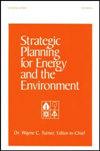Power Generation Sources and Carbon Dioxide Emissions in BRICS Countries: Static and Dynamic Panel Regression
Q3 Environmental Science
Strategic Planning for Energy and the Environment
Pub Date : 2023-02-15
DOI:10.13052/spee1048-5236.4143
引用次数: 17
Abstract
Purpose: The threat of global warming has escalated as a result of industrialization, urbanization, population growth, and lifestyle changes in Brazil, Russia, India, China, and South Africa (BRICS). The amount of electricity generated by various sources is directly influenced by their respective carbon dioxide (CO2 ) emissions. This study’s primary goal is to determine which sources are bad for the environment and which are not. Methodology: Examining the impact of different energy generation sources on CO2 emissions using data from the BRICS. To analyze the data, pooled OLS and Generalized Method of Moments (GMM) are used, as well as Quantile Regression (QR). Findings: We found that coal and gas power generation had a positive and large influence on CO2 emissions regardless of the method used. As compared to other emissions, coal-fired energy production has a more significant impact. In all regression models, hydroelectric and renewable energy generation can reduce CO2 emissions. Originality: Identifying an empirical link between CO2 emissions and energy production sources is the study’s most significant accomplishment. To obtain solid results, the paper used a combination of QR and GMM techniques. The conclusions presented in this article have important environmental policy consequences. CO2 emissions can be reduced by reducing the consumption of fossil fuels and promoting the development of alternative energy sources such as hydroelectric, wind, and solar power.金砖国家发电来源与二氧化碳排放:静态和动态面板回归
目的:由于巴西、俄罗斯、印度、中国和南非(金砖国家)的工业化、城市化、人口增长和生活方式的改变,全球变暖的威胁已经升级。各种来源产生的电量直接受到其各自二氧化碳(CO2)排放量的影响。这项研究的主要目标是确定哪些来源对环境有害,哪些不是。方法:利用金砖国家的数据研究不同能源发电来源对二氧化碳排放的影响。为了分析数据,使用了混合OLS和广义矩量法(GMM)以及分位数回归(QR)。研究结果:我们发现,无论使用何种方法,煤炭和天然气发电都会对二氧化碳排放产生积极而巨大的影响。与其他排放相比,燃煤能源生产的影响更为显著。在所有回归模型中,水力发电和可再生能源发电可以减少二氧化碳排放。独创性:确定二氧化碳排放和能源生产来源之间的经验联系是该研究最重要的成就。为了获得可靠的结果,本文结合了QR和GMM技术。本文提出的结论具有重要的环境政策后果。可以通过减少化石燃料的消耗和促进水电、风能和太阳能等替代能源的开发来减少二氧化碳排放。
本文章由计算机程序翻译,如有差异,请以英文原文为准。
求助全文
约1分钟内获得全文
求助全文
来源期刊

Strategic Planning for Energy and the Environment
Environmental Science-Environmental Science (all)
CiteScore
1.50
自引率
0.00%
发文量
25
 求助内容:
求助内容: 应助结果提醒方式:
应助结果提醒方式:


